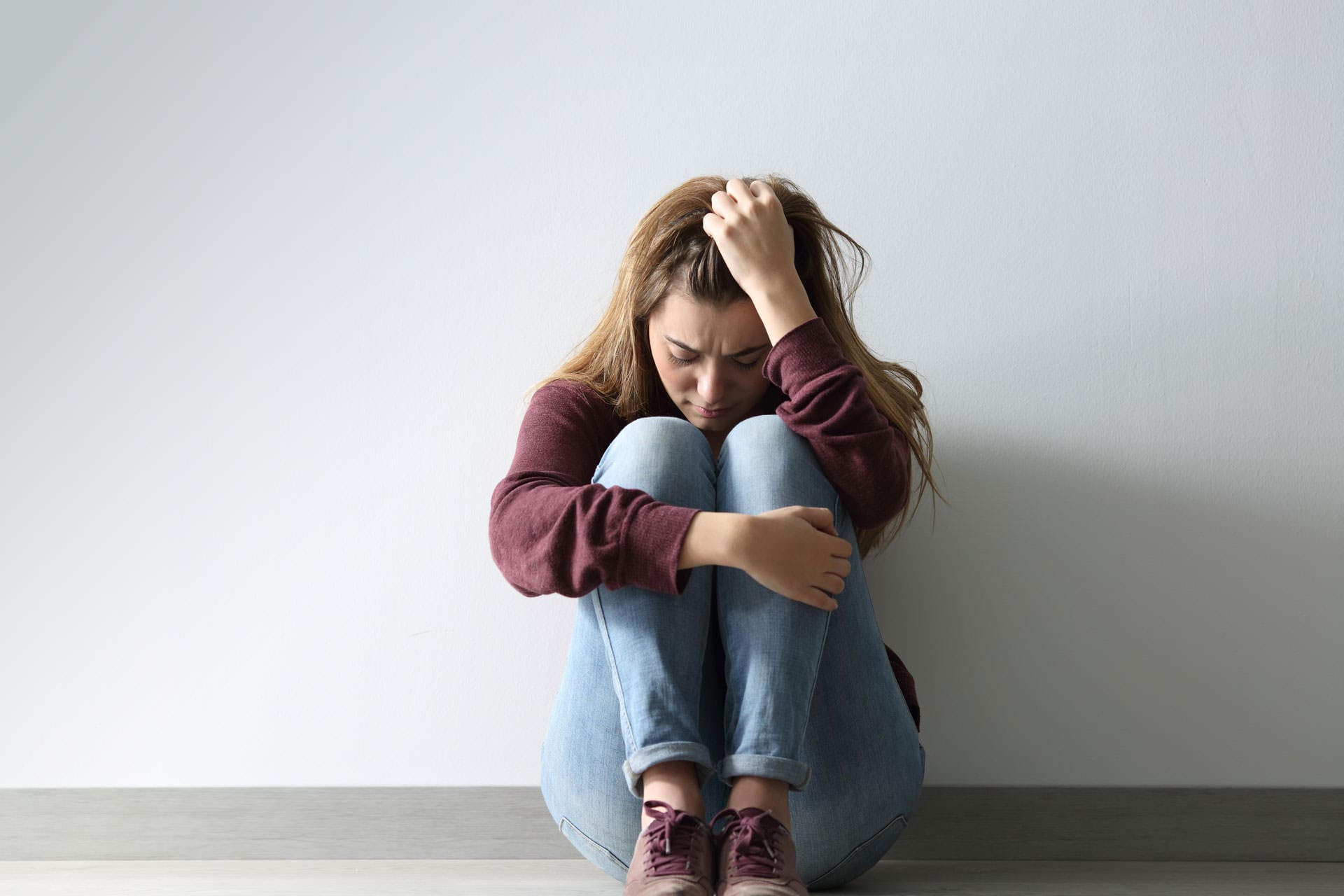Last spring, at the CCIS Conference in Sonoma, at the conclusion of a workshop addressing the importance of Independent Study programs and schools, the presenter opened up the discussion to the audience. One of the participants—a teacher new to independent study—raised her hand and somewhat tentatively asked this question: “Is anyone else here seeing an increase in emotional and mental health issues among their students?” Every hand went up. Every single one.
The increase we are seeing in emotional and mental health issues among our student population is not just a local trend, it is one that is being observed across the state and nation. A 2016 report by National Public Radio (NPR) found that nearly 20% of students in the United States showed some signs or symptoms of mental and/or emotional health issues at any given time. That’s one in five out of every one of our students in every one of our schools and in every one of our classrooms. Wow!
But sadly, the vast majority of children that are struggling with issues such as depression, anxiety, suicidal ideation or substance abuse are not getting the mental health services they need. Current numbers are difficult to come by, but one study found that between one-half and possibly as high as 80% of children do not receive the mental health care they need (Kataoka et al, 2002).
It truly is a crisis affecting millions of students in our schools across our state and across our nation. Millions of kids is a big number. It’s also a faceless one. When we go into our schools and our classrooms and look into the faces of our students we put names to these numbers. And it breaks our hearts.
Journalists Meg Anderson and Kavitha Cardoza reported the unsurprising opinion that “schools could play a role in identifying students with problems and helping them succeed.” Again, no surprise there. So, what’s the problem? Anderson and Cardoza concluded with the frustrating observation that “it’s a role many schools are not prepared” to handle. It is exactly this lack of preparation, resources and training that frustrates so many of us in our classrooms.
The reality of the situation is that—no matter how much we may care and genuinely want to help our students—school personnel are often woefully unprepared to deal with these serious situations. Nevertheless, there are things that we can do to make a difference.
Areas of Concern
In preparing this blog, I reached out to a few of the psychologists and counselors in the Oak Park Unified School District (OPUSD) where I work and asked them what are some of the greatest areas of concern in relation to students social/emotional health and wellness. I was not prepared for the number of different serious issues they shared. From bullying and social exclusion to gender- and sexual-identity issues, from increased depression and anxiety to other mental health disorders, the list was long. And many of our students are dealing with several of these issues simultaneously.
At the top of the list as the most serious problem was suicidal ideation—when students have suicidal thoughts and are thinking about or planning suicide. According to the US Centers for Disease Control and Prevention, suicide is now the second leading cause of death for teenagers 15-19 years old. A major cause of suicide is depression and anxiety. Persistent exclusion from peer social relationships is most likely to increase teens’ risk for depression.
The Role of Social Media
The irony of social media is that it allows us to be more connected to each other than has ever before been possible at any other time in human history. And yet several converging lines of evidence are showing that it may also be responsible for the increase in depression and anxiety among our youth.
In a longitudinal study published in the journal Emotion, researchers Jean M. Twenge, a professor of psychology at San Diego State University, and her colleagues Gabrielle Martin and Keith Campbell surveyed over one-million 8th, 10th, and 12th graders. The 25-year survey, which began in 1991 and ended in 2016, had the express purpose of measuring students’ psychological well-being: self-esteem, life satisfaction, and happiness (2018). The researchers’ conclusion was that young people’s well-being suddenly decreased after 2012. The data was clear: adolescents who spent more time on electronic communication and screens using social media, the Internet, texting, and gaming and less time on non-screen activities (e.g., actual in-person social interaction) had measurably lower states of psychological well-being. Adolescents spending a small amount of time on electronic communication were the happiest (Twenge et al, 2018).
To put it more simply, Twenge explained, “The more time teens spend looking at screens, the more likely they are to report symptoms of depression” (2017). Conversely, evidence shows that limiting social-media use reduces loneliness and depression (Hunt et al, 2018). Social media is creating in the minds of our teens a fake fear of missing out (FOMO) on some imagined exciting or interesting event that might be happening somewhere else while causing them to actually miss out on all of the good things that are really happening all around them. There are some positive steps that parents, and teachers too, can take to help young people. We can begin by creating technology free times and technology free zones. We can also set the example by modeling balanced screen time. That’s right: put the phone down and engage with the people right there in front of you.
Building Relationships
We are in education because we care about children. But the majority of us do not have adequate training to deal with some of the serious issues our students are dealing with– that’s why we have school counselors and psychologists. One of my colleagues recently lamented, “They didn’t prepare us to deal with these kinds of things when we were getting our teaching credential!” No, they didn’t. But there is still much that each of us—teachers, administrators and other faculty and staff—can do to support our students.
In a study done by the Carnegie Foundation for the Advancement of Teaching in 2015, researchers Susan Headden and Sarah McKay looked at the importance of relationships and student achievement. They found that “an educational environment that helps students develop and maintain positive, meaningful relationships with adults and peers at school,” is a powerful promoter of student motivation and engagement. When our students feel “more positively about school [and] when they have ongoing connections with teachers” they will have a greater sense of safety, security and belonging in their school and the larger community. By actively building strong relationships with our students and by connecting with them on a personal level, we are making a profound difference in their lives. Headden and McKay summed it up: “In other words, students care when they feel cared about.”
An overarching goal for us as educators is to develop some of the knowledge, awareness and related skills needed to be empathetic with the challenges our students are facing and to—when and wherever possible—offer encouragement and support. While everyone at school has a role to play, teachers in particular are in a key position. Many students spend more time directly engaging with their teachers than they do with their own families.
OPUSD High School Counselor, Jeremy Rogers commented that “teachers are often the first ones at schools to be able to identify concerns—they see the students every day.” An early intervention based on those warning signs is critical. Teachers are not trained mental health professionals, but we do know our students.
When we see significant changes in behavior, we can and should follow-up by communicating our concerns to school counselors or administrators who would then schedule a Student Study Team (SST) or other appropriate intervention.
Upcoming CCIS Conference Presentations
This week, November 14th-16th, 2018 is the CCIS Fall Conference in Irvine, California. This conference will feature several important presentations and workshops designed to help us understand and better address these issues.
Our Keynote Speaker will be Dr. Scott Poland, Professor at the College of Psychology at Nova Southeastern University, Fort Lauderdale, Florida. Dr. Poland is a licensed psychologist internationally recognized as an expert on youth suicide, self-injury, and school violence. His Keynote Address will focus on the theme: “Educators Making a Difference for Students in a Challenging World.”
I spoke to Dr. Poland last week and asked him what would be some of the main points we should be looking forward to in his upcoming presentations. A major theme he emphasized was the importance of the role of school in the lives of young people. Citing the Carnegie Foundation study referenced above, he emphasized that students’ connection to schools and their relationships with their classmates, teachers and other faculty are vital protective factors in their lives. What we do matters. Acknowledging that “we are in education because we care about children,” he added that when we listen to students–really listen–and make the effort to get to know them as a person, then students know that we really care.
And, as the saying goes: Students don’t care how much we know until they know who much we care. By showing that we care, we are making a difference in their lives. Dr. Poland concluded by saying: “We can’t fix everything, but we can certainly help.”
Additionally, Dr. Poland will be leading other workshops discussing contemporary issues in school crises, including youth suicide and mental health interventions and preventions. (Click here for the conference schedule.)
What We Do Matters
Our students today face many challenges whether at home, in the world at large or in our schools. And yet, as Dr. Poland observed, “Schools still remain the safest place that children go.” Each of us has a part to play in making them feel safe at school, not just physically, but emotionally too.
Our roles and responses will be different depending upon our position at our school site; but no matter what our title is, we are all in a position to make a difference. We do this by being there every day for our students, by taking a personal interest in them and building relationships, making them feel cared for as an individual and that they are part of our community. There are nevertheless many things that we can do to make a real and positive difference in our students’ lives. And that matters.
Additional Resources
- Mental Health Resources – CA Dept. of Education – Resources for psychological and mental health issues, including coping with tragedy, crisis intervention and prevention, school psychology, and suicide prevention.
- Association for Children’s Mental Health – ACMH provides information, support, resources, referral and advocacy for children and youth with mental, emotional, or behavioral disorders and their families.
References
- Adolescent Health. (2015). Leading causes of deaths among adolescents aged 15–19 years. Center for Disease Control and Prevention. Retrieved from https://www.cdc.gov/nchs/fastats/adolescent-health.htm
- Anderson, M., Cardoza, K, (2016). Mental health in schools: A hidden crisis affecting millions of students. NPR. Retrieved from https://www.npr.org/sections/ed/2016/08/31/464727159/mental-health-in-schools-a-hidden-crisis-affecting-millions-of-students
- Headden, S., & McKay, S. (2015). Motivation matters: How new research can help teachers boost student engagement. Carnegie Foundation for the Advancement of Teaching. Stanford, CA.
- Kataoka, S., Zhang, L., & Wells, K. (2002). Unmet need for mental health care among U.S. children: Variation by ethnicity and insurance status. American Journal of Psychiatry, 159(9), pp. 1548-1555.
- Hunt, M., Marx, R., Lipson, C., & Young, J. (2018). No more fomo: Limiting social media decreases loneliness and depression. Guilford Publications. University of Pennsylvania.
- O’Brien, D. (2014). Stress and Violence: At Risk Youth. Retrieved from https://sites.google.com/site/jpldobrien/trends-and-issues-in-education/stress-and-violence-at-risk-youth?pli=1
- Poland, S., Ph.D. (2018a, February). Crisis intervention in schools: Helping students cope after tragedy and loss. Workshop presentation at the 2018 Spring Conference of the California Consortium for Independent Study, Sonoma, CA.
- Poland, S., Ph.D. (2018b, February). Safeguarding our youth and building success and resiliency: Lessons from the front lines of school crises. Keynote Address at the 2018 Spring Conference of the California Consortium for Independent Study, Sonoma, CA.
- Twenge, J. M. (2017). Have Smartphones Destroyed a Generation? The Atlantic. Retrieved from https://www.theatlantic.com/amp/article/534198/
- Twenge, J. M., Martin, G. N., & Campbell, W. K. (2018). Decreases in psychological well-being among American adolescents after 2012 and links to screen time during the rise of smartphone technology. Emotion, 18(6), 765-780.




0 Comments